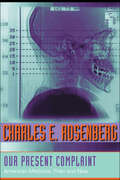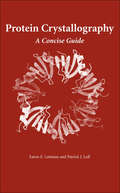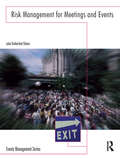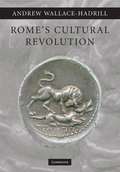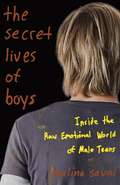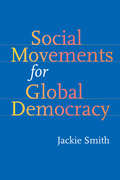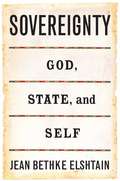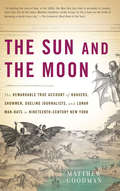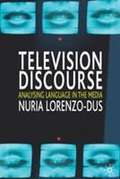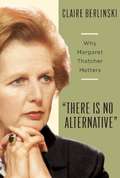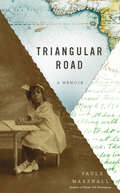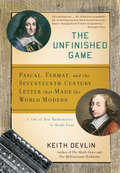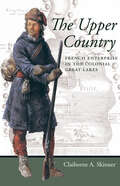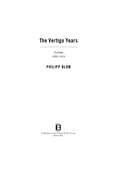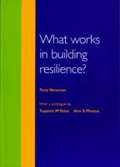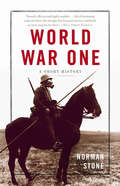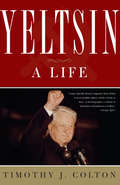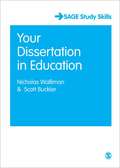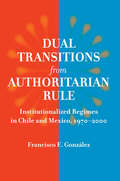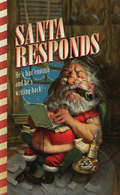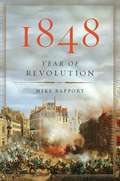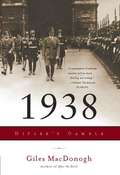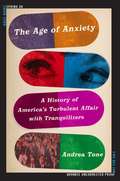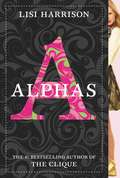- Table View
- List View
Our Present Complaint: American Medicine, Then and Now
by Charles E. RosenbergCharles E. Rosenberg, one of the world's most influential historians of medicine, presents a fascinating analysis of the current tensions in American medicine. Situating these tensions within their historical and social contexts, Rosenberg investigates the fundamental characteristics of medicine: how we think about disease, how the medical profession thinks about itself and its moral and intellectual responsibilities, and what prospective patients—all of us—expect from medicine and the medical profession. He explores the nature and definition of disease and how ideas of disease causation reflect social values and cultural negotiations. His analyses of alternative medicine and bioethics consider the historically specific ways in which we define and seek to control what is appropriately medical. At a time when clinical care and biomedical research generate as much angst as they offer cures, this volume provides valuable insight into how the practice of medicine has evolved, where it is going, and how lessons from history can improve its prognosis.
Protein Crystallography: A Concise Guide
by Eaton E. Lattman Patrick J. LollThe proteome remains a mysterious realm. Researchers have determined the structures of only a small fraction of the proteins encoded by the human genome. Crystallography continues to be the primary method used to determine the structures of the remaining unknown proteins. This imaging technique uses the diffraction of X-rays to determine a protein’s three-dimensional molecular structure.Drawing on years of research and teaching experience, Eaton E. Lattman and Patrick J. Loll use clear examples and abundant illustrations to provide a concise and accessible primer on protein crystallography. Discussing the basics of diffraction, the behavior of two- and three-dimensional crystals, phase determination (including MIR and MAD phasing and molecular replacement), the Patterson function, and refinement, Lattman and Loll provide a complete overview of this important technique, illuminated by physical insights.The crisp writing style and simple illustrations will provide beginner crystallographers with a guide to the process of unraveling protein structure.
Risk Management for Meetings and Events (1st Edition)
by Julia Rutherford SilversEvents of all types are produced every day for all manner of purposes, attracting all sorts of people. Creating and managing the environment in which these people will gather carries with it awesome responsibilities - legal, ethical, and financial. To provide a safe and secure setting and to operate in a manner that ensures the hosting organizations or individuals achieve their objectives in a proper and profitable way, event risk management must be fully integrated into all event plans and throughout the event management process.Risk Management for Meetings and Events examines the practices, procedures, and safeguards associated with the identification, analysis, response planning, and control of the risks surrounding events of all types. Written by an experienced author it:* Provides a solid, easy-to-read conceptual foundation based on proven risk management techniques* Includes ready-to-use templates designed specifically as learning exercises for students and professionals* Comprehensively discusses effective strategies for managing the risks associated with design, planning and production of public and private events Risk Management for Meetings and Events is a comprehensive and practical guide which supports academic and professional development programs that prepare individuals for entering or advancement in the meeting and event management industry.
Risk Management for Meetings and Events (1st Edition) (PDF)
by Julia Rutherford SilversEvents of all types are produced every day for all manner of purposes, attracting all sorts of people. Creating and managing the environment in which these people will gather carries with it awesome responsibilities - legal, ethical, and financial. To provide a safe and secure setting and to operate in a manner that ensures the hosting organizations or individuals achieve their objectives in a proper and profitable way, event risk management must be fully integrated into all event plans and throughout the event management process.Risk Management for Meetings and Events examines the practices, procedures, and safeguards associated with the identification, analysis, response planning, and control of the risks surrounding events of all types. Written by an experienced author it:* Provides a solid, easy-to-read conceptual foundation based on proven risk management techniques* Includes ready-to-use templates designed specifically as learning exercises for students and professionals* Comprehensively discusses effective strategies for managing the risks associated with design, planning and production of public and private events Risk Management for Meetings and Events is a comprehensive and practical guide which supports academic and professional development programs that prepare individuals for entering or advancement in the meeting and event management industry.
Rome's Cultural Revolution (PDF)
by Andrew Wallace-HadrillDrawing equally on archaeological and literary evidence, this book offers an original interpretation of the fundamental transformations of Rome's society, culture and identity during the period of its imperial expansion.
The Secret Lives of Boys: Inside the Raw Emotional World of Male Teens
by Malina SavalTeenage boys have come a long way since the staid 1980s when they were all lumped into the Breakfast Club categories of Brains, Druggies, and Jocks. Crisscrossing the country-meeting with boys from different cultures, and socioeconomic backgrounds-journalist Malina Saval introduces readers to the next generation of male teens by creating new archetypes and redrawing the ever-expanding social map. The Secret Lives of Boys offers an uncensored look into boyhood that reveals the spine-tingling confessions, heartrending sadness and isolation, unbridled optimism, and seemingly boundless resilience of male teens today. Saval asks the pertinent questions: Who are these boys? What do they think of themselves? A compelling and candid look at male adolescence in the twenty-first century, The Secret Lives of Boys uncovers what our young people want you to know.
Social Movements for Global Democracy (Themes in Global Social Change)
by Jackie SmithThis groundbreaking study sheds new light on the struggle to define the course of globalization. Synthesizing extensive research on transnational activism, Social Movements for Global Democracy shows how transnational networks of social movement activists—democratic globalizers—have worked to promote human rights and ecological sustainability over the predominant neoliberal system of economic integration.Using case studies of recent and ongoing campaigns for global justice, Jackie Smith provides valuable insight into whether and how these activists are succeeding. She argues that democratic globalizers could be more effective if they presented a united front organized around a global vision that places human rights and ecological stability foremost and if they were to directly engage governments and the United Nations.Illuminating the deep-seated struggles between two visions of globalization, Smith reveals a network of activists who have long been working to democratize the global political system.
Sovereignty: God, State, and Self
by Jean Bethke ElshtainThroughout the history of human intellectual endeavor, sovereignty has cut across the diverse realms of theology, political thought, and psychology. From earliest Christian worship to the revolutionary ideas of Thomas Jefferson and Karl Marx, the debates about sovereignty—complete independence and self-government—have dominated our history.In this seminal work of political history and political theory, leading scholar and public intellectual Jean Bethke Elshtain examines the origins and meanings of &“sovereignty&” as it relates to all the ways we attempt to explain our world: God, state, and self. Examining the early modern ideas of God which formed the basis for the modern sovereign state, Elshtain carries her research from theology and philosophy into psychology, showing that political theories of state sovereignty fuel contemporary understandings of sovereignty of the self. As the basis of sovereign power shifts from God, to the state, to the self, Elshtain uncovers startling realities often hidden from view. Her thesis consists in nothing less than a thorough-going rethinking of our intellectual history through its keystone concept.The culmination of over thirty years of critically applauded work in feminism, international relations, political thought, and religion, Sovereignty opens new ground for our understanding of our own culture, its past, present, and future.
The Sun and the Moon: The Remarkable True Account of Hoaxers, Showmen, Dueling Journalists, and Lunar Man-Bats in Nineteen
by Matthew GoodmanOn August 26, 1835, a fledgling newspaper called the Sun brought to New York the first accounts of remarkable lunar discoveries. A series of six articles reported the existence of life on the moon-including unicorns, beavers that walked on their hind legs, and four-foot-tall flying man-bats. In a matter of weeks it was the most broadly circulated newspaper story of the era, and the Sun, a working-class upstart, became the most widely read paper in the world.An exhilarating narrative history of a divided city on the cusp of greatness, and tale of a crew of writers, editors, and charlatans who stumbled on a new kind of journalism, The Sun and the Moon tells the surprisingly true story of the penny papers that made America a nation of newspaper readers.
Television Discourse: Analysing Language In The Media (PDF)
by Nuria Lorenzo-DusWhat is the connection between what is said on TV and how it is said? Structured around key features of television discourse, Nuria Lorenzo-Dus examines the specific forms and structures of talk across media genres. Using data from programs as varied as news bulletins and political speeches to makeover and talk shows,Television Discourse examines four defining characteristics of the current broadcast landscape: Storytelling, Closeness, Conflict and Persuasion. This innovative, four-part structure allows for detailed discourse analysis of how each feature works in context; whilst 'Storytelling' is examined in relation to docu-soaps and talk shows, 'Closeness' is explored through the mediums of celebrity chat shows and reality programming. Insightful analysis of 'Conflict' in courtroom shows and 'Persuasion' in lifestyle programs enables readers to think critically about the ways in which television discourse is used to influence the viewer. With a helpful glossary and extensive guide to further reading,Television Discourse is an invaluable resource for all those interested in studying language in the media.
There Is No Alternative: Why Margaret Thatcher Matters
by Claire BerlinskiGreat Britain in the 1970s appeared to be in terminal decline-ungovernable, an economic train wreck, and rapidly headed for global irrelevance. Three decades later, it is the richest and most influential country in Europe, and Margaret Thatcher is the reason. The preternaturally determined Thatcher rose from nothing, seized control of Britain's Conservative party, and took a sledgehammer to the nation's postwar socialist consensus. She proved that socialism could be reversed, inspiring a global free-market revolution. Simultaneously exploiting every politically useful aspect of her femininity and defying every conventional expectation of women in power, Thatcher crushed her enemies with a calculated ruthlessness that stunned the British public and without doubt caused immense collateral damage.Ultimately, however, Claire Berlinski agrees with Thatcher: There was no alternative. Berlinski explains what Thatcher did, why it matters, and how she got away with it in this vivid and immensely readable portrait of one of the towering figures of the twentieth century.
Triangular Road: A Memoir
by Paule MarshallIn Triangular Road, famed novelist Paule Marshall tells the story of her years as a fledgling young writer in the 1960s. A memoir of self-discovery, it also offers an affectionate tribute to the inimitable Langston Hughes, who entered Marshall's life during a crucial phase and introduced her to the world of European letters during a whirlwind tour of the continent. In the course of her journeys to Europe, Barbados, and eventually Africa, Marshall comes to comprehend the historical enormity of the African diaspora, an understanding that fortifies her sense of purpose as a writer.In this unflinchingly honest memoir, Paule Marshall offers an indelible portrait of a young black woman coming of age as a novelist in a literary world dominated by white men.
The Unfinished Game: Pascal, Fermat, and the Seventeenth-Century Letter that Made the World Modern (Basic Ideas Ser.)
by Keith DevlinIn the early seventeenth century, the outcome of something as simple as a dice roll was consigned to the realm of unknowable chance. Mathematicians largely agreed that it was impossible to predict the probability of an occurrence. Then, in 1654, Blaise Pascal wrote to Pierre de Fermat explaining that he had discovered how to calculate risk. The two collaborated to develop what is now known as probability theory-a concept that allows us to think rationally about decisions and events.In The Unfinished Game, Keith Devlin masterfully chronicles Pascal and Fermat's mathematical breakthrough, connecting a centuries-old discovery with its remarkable impact on the modern world.
The Upper Country: French Enterprise in the Colonial Great Lakes (Regional Perspectives on Early America)
by Claiborne A. SkinnerThe Upper Country melds myth and conventional history to provide a memorable tale of French designs in the middle of what became the United States. Putting the reader on the battlefields, at the trading posts, and on the rivers with voyageurs and their allies from the Indian nations, Claiborne Skinner reveals the saintly missionaries and jolly fur traders of popular myth as agents of a hard-nosed, often ruthless, imperial endeavor. Skinner’s engaging narrative takes the reader through daily life at posts like Forts Saint Louis and Michilimakinac, illuminates the complexities of interracial marriage with the courtship of Michel Aco at Peoria, and explains how France's New World adventurism played a role in the outbreak of the Seven Years War and the beginning of the modern era.In this story, many of the traditional heroes and villains of American history take on surprising roles. The last Stuart kings of England seem shrewd and even human; George Washington makes his debut appearance on the stage of history by assassinating a French officer and plunging Europe into the first truly global war. From unthinkable hardship to dreams of fur trade profits, this fascinating exploration sheds new light on France and its imperial venture into the Great Lakes.
The Vertigo Years: Europe, 1900-1914
by Philipp BlomEurope, 1900-1914: a world adrift, a pulsating era of creativity and contradictions. The major topics of the day: terrorism, globalization, immigration, consumerism, the collapse of moral values, and the rivalry of superpowers. The twentieth century was not born in the trenches of the Somme or Passchendaele-but rather in the fifteen vertiginous years preceding World War I.In this short span of time, a new world order was emerging in ultimately tragic contradiction to the old. These were the years in which the political and personal repercussions of the Industrial Revolution were felt worldwide: Cities grew like never before as people fled the countryside and their traditional identities; science created new possibilities as well as nightmares; education changed the outlook of millions of people; mass-produced items transformed daily life; industrial laborers demanded a share of political power; and women sought to change their place in society-as well as the very fabric of sexual relations.From the tremendous hope for a new century embodied in the 1900 World's Fair in Paris to the shattering assassination of a Habsburg archduke in Sarajevo in 1914, historian Philipp Blom chronicles this extraordinary epoch year by year. Prime Ministers and peasants, anarchists and actresses, scientists and psychopaths intermingle on the stage of a new century in this portrait of an opulent, unstable age on the brink of disaster.Beautifully written and replete with deftly told anecdotes, The Vertigo Years brings the wonders, horrors, and fears of the early twentieth century vividly to life.
What Works in Building Resilience? (PDF)
by Tony NewmanThis books reviews strategies, interventions and approaches that can help build resilience in children and young people. It is aimed at social care professionals.
World War One: A Short History
by Norman StoneThe First World War was the overwhelming disaster from which everything else in the twentieth century stemmed. Fourteen million combatants died, four empires were destroyed, and even the victors' empires were fatally damaged. World War I took humanity from the nineteenth century forcibly into the twentieth-and then, at Versailles, cast Europe on the path to World War II as well. In World War One, Norman Stone, one of the world's greatest historians, has achieved the almost impossible task of writing a terse and witty short history of the war. A captivating, brisk narrative, World War One is Stone's masterful effort to make sense of one of the twentieth century's pivotal conflicts.
Yeltsin: A Life
by Timothy J. ColtonEven after his death in April 2007, Boris Yeltsin remains the most controversial figure in recent Russian history. Although Mikhail Gorbachev presided over the decline of the Communist party and the withdrawal of Soviet control over eastern Europe, it was Yeltsin-Russia's first elected president-who buried the Soviet Union itself. Upon taking office, Yeltsin quickly embarked on a sweeping makeover of newly democratic Russia, beginning with a program of excruciatingly painful market reforms that earned him wide acclaim in the West and deep recrimination from many Russian citizens. In this, the first biography of Yeltsin's entire life, Soviet scholar Timothy Colton traces Yeltsin's development from a peasant boy in the Urals to a Communist party apparatchik, and then ultimately to a nemesis of the Soviet order. Based on unprecedented interviews with Yeltsin himself as well as scores of other Soviet officials, journalists, and businessmen, Colton explains how and why Yeltsin broke with single-party rule and launched his drive to replace it with democracy. Yeltsin's colossal attempt to bring democracy to Russia remains one of the great, unfinished stories of our time. As anti-Western policies and rhetoric resurface in Putin's increasingly bellicose Russia, Yeltsin offers essential insights into the past, present, and future of this vast and troubled nation.
Your Dissertation In Education (PDF)
by Nicholas Walliman Scott Buckler Nicholas S. R. WallimanYour Dissertation in Education provides a systematic, practical approach to dissertation and project writing for students in education. This is a revised edition of Nicholas Walliman's best-selling Your Undergraduate Dissertation, specifically developed for students from a range of educational disciplines, including teacher training, early childhood and education studies. This book is unique in being the first devoted to providing a guide that is tailored to fit the specific needs of education students. The contents chart the whole dissertation-writing process, from establishing a question and thinking about research, to completing the writing, and dissemination. Throughout, the emphasis is on providing practical, down-to-earth advice that addresses common questions, such as: How do I get started? How do I write a research proposal? How do I write an introduction? How do I write a literature review? How do I argue my point effectively? How do I write a methodology chapter? How can I work effectively with my supervisor? How do I cope with stress? Practical examples, summary sections and additional references are incorporated throughout, providing the reader with a comprehensive and easy-to-follow guide to completing their dissertation successfully. Nicholas Walliman is Senior Lecturer and Researcher, Oxford Brookes University Scott Buckler is Senior Lecturer, Institute of Education, University of Worcester. Alternate ISBN 9781412946223
Dual Transitions from Authoritarian Rule: Institutionalized Regimes in Chile and Mexico, 1970–2000
by Francisco E. GonzálezLatin America's region-wide 1982 economic collapse had a drastic effect on governments throughout Central and South America, leading many to the verge of failure and pushing several of the most stridently authoritarian—Argentina, Bolivia, Brazil, and Uruguay—over the brink. Surprisingly though, Chile's repressive military dictatorship and Mexico's hegemonic civilian regime endured amid the economic chaos that rocked the region. Dual Transitions from Authoritarian Rule explains why the regimes in these two nations survived the financial upheaval of the early 1980s and how each progressed toward a more open, democratic, market-driven system in later years. Using an in-depth comparative analysis of Chile and Mexico, Francisco González explains that the two governments—though quite different ideologically—possessed a common type of institutionalized authoritarian rule that not only served to maintain the political status quo but, paradoxically, also aided proponents of political and economic liberalization. Featuring a discussion of parallel phenomena in Brazil, Hungary, Taiwan, and South Korea, Dual Transitions from Authoritarian Rule presents a cogent challenge to the received wisdom that sociopolitical and economic change within authoritarian nations must be approached separately. This book will interest scholars of Latin American politics, democratization studies, market reform, and comparative politics and international relations.
Santa Responds: He's Had Enough...and He's Writing Back!
by Santa ClausEver wonder what Santa does with all those letters? (And all those cookies?) After a particularly long, cold night staring at nine smelly reindeer butts, the old man lets loose with the real answers to those stupid, whiny, hard-to-read letters from kids. Turns out, we really do get what we deserve.Dear Billy,I know you honestly believe that the good deeds you rattled off represent your behavior for the entire past year rather than the activities that occurred during the two hours leading up to the writing of this letter. Two hours of good behavior hardly justifies a new Playstation, let alone a trip to Disney World!!Your pal,Santa
1848: Year of Revolution
by Mike RapportA "lively, panoramic" history of a revolutionary year (New York Times) In 1848, a violent storm of revolutions ripped through Europe. The torrent all but swept away the conservative order that had kept peace on the continent since Napoleon's defeat at Waterloo in 1815 -- but which in many countries had also suppressed dreams of national freedom. Political events so dramatic had not been seen in Europe since the French Revolution, and they would not be witnessed again until 1989, with the revolutions in Eastern and Central Europe. In 1848, historian Mike Rapport examines the roots of the ferment and then, with breathtaking pace, chronicles the explosive spread of violence across Europe. A vivid narrative of a complex chain of interconnected revolutions, 1848 tells the exhilarating story of Europe's violent "Spring of Nations" and traces its reverberations to the present day.
1938: Hitler's Gamble
by Giles MacDonoghIn this masterful narrative, acclaimed historian Giles MacDonogh chronicles Adolf Hitler's consolidation of power over the course of one year. Until 1938, Hitler could be dismissed as a ruthless but efficient dictator, a problem to Germany alone; after 1938 he was clearly a threat to the entire world.It was in 1938 that Third Reich came of age. The Führer brought Germany into line with Nazi ideology and revealed his plans to take back those parts of Europe lost to "Greater Germany” after the First World War. From the purging of the army in January through the Anschluss in March, from the Munich Conference in September to the ravages of Kristallnacht in November, MacDonogh offers a gripping account of the year Adolf Hitler came into his own and set the world inexorably on track to a cataclysmic war.
The Age of Anxiety: A History of America's Turbulent Affair with Tranquilizers
by Andrea ToneAnxious Americans have increasingly pursued peace of mind through pills and prescriptions. In 2006, the National Institute of Mental Health estimated that 40 million adult Americans suffer from an anxiety disorder in any given year: more than double the number thought to have such a disorder in 2001. Anti-anxiety drugs are a billion-dollar business. Yet as recently as 1955, when the first tranquilizer-Miltown-went on the market, pharmaceutical executives worried that there wouldn't be interest in anxiety-relief. At mid-century, talk therapy remained the treatment of choice. But Miltown became a sensation-the first psychotropic blockbuster in United States history. By 1957, Americans had filled 36 million prescriptions. Patients seeking made-to-order tranquility emptied drugstores, forcing pharmacists to post signs reading "more Miltown tomorrow.” The drug's financial success and cultural impact revolutionized perceptions of anxiety and its treatment, inspiring the development of other lifestyle drugs including Valium and Prozac. In The Age of Anxiety, Andrea Tone draws on a broad array of original sources-manufacturers' files, FDA reports, letters, government investigations, and interviews with inventors, physicians, patients, and activists-to provide the first comprehensive account of the rise of America's tranquilizer culture. She transports readers from the bomb shelters of the Cold War to the scientific optimism of the Baby Boomers, to the "just say no” Puritanism of the late 1970s and 1980s. A vibrant history of America's long and turbulent affair with tranquilizers, The Age of Anxiety casts new light on what it has meant to seek synthetic solutions to everyday angst.
Alphas #1 (The Clique #1)
by Lisi HarrisonAt OCD the losers are tormented.At Alpha Academy, they're sent home.Skye Hamilton has scored an invitation to the ultra-exclusive Alphas-only boarding school where beta is spelled LBR . What happens when the country's best, brightest, and hawtest begin clawing and scratching their way to the top?
